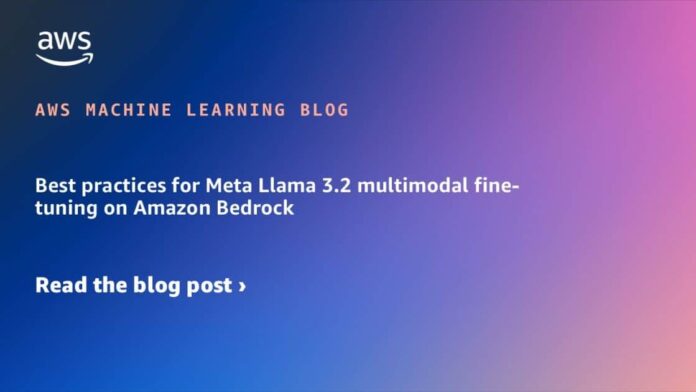In the world of artificial intelligence, multimodal fine-tuning is shaping up as an innovative strategy to customize foundational models, particularly in tasks that require a precise integration of visual and textual information. Although these multimodal models possess outstanding general abilities, they have limitations when addressing specialized visual tasks or content from specific domains. This is where fine-tuning, or fine adjustment, becomes a crucial element, adapting the models to specific data to optimize their performance in critical business tasks.
Amazon Bedrock has integrated fine-tuning capabilities for Meta's Llama 3.2 multimodal models. This feature enables organizations to customize these complex models according to their unique needs, applying practices based on exhaustive investigations with public datasets. These experiments have shown that fine-tuned models can improve their accuracy by up to 74% in specialized visual understanding tasks, compared with their base versions.
The process offered by Amazon includes extensive experiments with public multimodal tasks, such as visual question answering or image description generation. Implementing these recommendations, it is possible to extend the potential of smaller models, achieving results comparable to those of larger and more expensive models, thereby reducing inference costs and latency.
Among the suggested use cases for fine-tuning Meta Llama 3.2, the following stand out: visual question answering, graph interpretation, and the generation of image descriptions. Additionally, this technique is successfully applied in the extraction of structured information from documents, improving data identification in invoices or forms.
To make the most of these capabilities, it is essential to have an active AWS account and to have the Meta Llama 3.2 models enabled on Amazon Bedrock, currently available in the AWS US West (Oregon) region. The preparation of datasets in Amazon S3 is another key requirement, ensuring optimal structures and qualities.
The experiments have been conducted with multimodal datasets such as LlaVA-Instruct-Mix-VSFT and Cut-VQAv2, highlighting the importance of properly adapting the training data to optimize performance. It is recommended to use a single example per record and to start with high-quality samples before scaling up.
Configuring parameters such as the number of epochs and the learning rate can further improve performance. For small datasets, a larger number of epochs is beneficial, while for large datasets, a smaller number may be sufficient.
The choice between the 11B and 90B Meta Llama 3.2 models requires considering a balance between precision and cost. Although fine-tuning improves performance overall, the 90B model is ideal for applications that require high precision in complex tasks.
The fine-tuning of Meta's Llama 3.2 on Amazon Bedrock opens a door to customized AI solutions. By focusing on data quality and proper personalization, companies can achieve significant performance improvements even with modest datasets, turning this technology into a versatile and accessible tool for diverse organizations.



